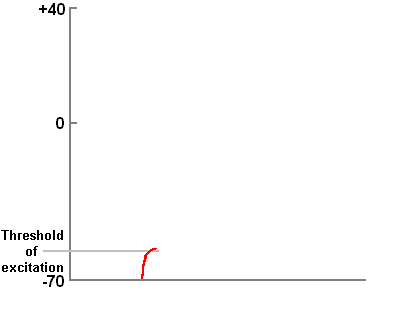
Notice how the action potential involves an influx of Na+ which causes a region of positive charge that then opens nearby Na+ channels. This "chain reaction" is how the action potential moves down the axon. Just behind the action potential, K+ channels open and K+ ions leave the axon taking a positive charge with them. This brings the axon back to resting potential.
As the traveling signals of nerves and as the localized changes that contract muscle cells, action potentials are an essential feature of animal life. They set the pace of thought and action, constrain the sizes of evolving anatomies and enable centralized control and coordination of organs and tissues.
When a biological cell or patch of membrane undergoes an action potential—or electrical excitation—the polarity of the transmembrane voltage swings rapidly from negative to positive and back. Within any one excitable cell, consecutive action potentials typically are indistinguishable. Also between different cells the amplitudes of the voltage swings tend to be roughly the same. But the speed and simplicity of action potentials vary significantly between cells, in particular between different cell types.
Minimally, an action potential involves a depolarization, a repolarization and finally a hyperpolarization (or "undershoot"). In specialized muscle cells of the heart, such as the pacemaker cells, a plateau phase of intermediate voltage may precede repolarization.
|